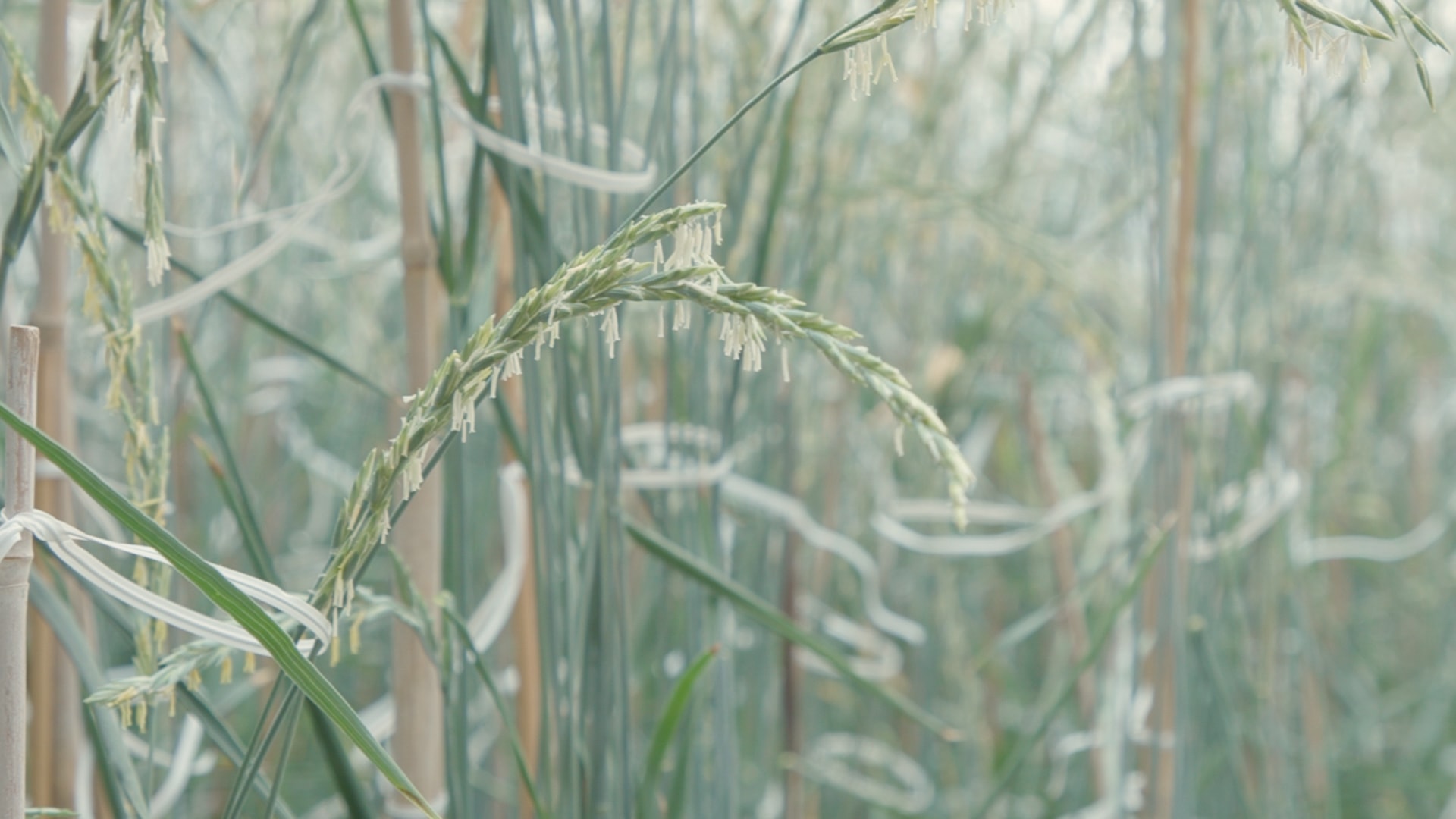The Land Institute Is Designing New Crops To Feed The World And Preserve The Planet
Published in Flatland 3/28/24 Read Full Article HERE.
SALINA, Kansas — Sometimes developing food for the future can be like playing the lottery. The Land Institute is playing the long game to develop perennial grain crops that reduce farmer inputs and promote healthy soils.
At the institute, greenhouse specialists will place an annual plant next to a perennial plant and then study all the combinations that result from their cross pollination. The goal is to create high-yielding grain crops that don’t have to be planted every year.
“You’re not really sure which of these traits you’re going to get at any given time,” explained Lydia Nicholson, educational design technician at The Land Institute. “But there’s a chance that you’re going to hit that jackpot and really quickly find a product that has everything you need.”
In essence, that’s a simplification of the scientific work that goes on at The Land Institute. It also illustrates the remarkable progress of the nonprofit, which started in 1976.
Kernza, The Land Institute’s most notable perennial grain, has found a market in beer, flour and cereal production. It is now grown on more than 2,000 acres of U.S. cropland. Kernza offers evidence that perennialization, which is a slow occurring process in nature, can be cultivated.
Why Perennials?

Most food crops are annual plants. Each year, farmers till the soil, plant seeds and spread fertilizer and herbicide to raise the next crop.
It’s an essentially extractive process that has led to an estimated loss of 24-46% of topsoil in the Corn Belt, according to a study from the University of Massachusetts.
Perennial plants, on the other hand, come back each year and keep most of the soil and its nutrients in place.
The Land Institute believes that by replacing annual crops, (primarily grain crops such as corn, soybeans and wheat) with perennial versions, producers can feed the world and take care of the land they farm.
Moreover, the deep root systems of established perennial plants absorb more carbon out of the atmosphere and put it back into the soil. Notably, Kernza is used in Minnesota to remove harmful nitrates from drinking water.
The Land Institute is working to perennialize some traditional grains, including wheat, sorghum and several varieties of lentil. It is also trying to domesticate Silphium, a wild perennial, to be used as an oilseed.
Many of these crops are still years from being successful as a crop, though they’ve shown promise in a greenhouse setting.
The Land Institute wants to make sure that a crop will perform well in the wild before asking a farmer to plant it. This means making sure they can start from a seed outdoors, grow well under varying conditions and be harvestable with conventional equipment.
Healthy Food Leads to Healthy Communities
Conventional agriculture systems have allowed food production to scale up and create affordable food by maximizing production.
“But there are tremendous hidden costs in scaling up and those lower prices of foods,” said Matt Sanderson, a professor at Kansas State University
Sanderson teaches undergraduate and graduate level courses about community, sustainability, environment, global change, agriculture and food.
“People are searching for alternatives,” Sanderson said. “Farmers are because of what they’re seeing (happen) on the landscape to biodiversity, to soil, to water, but also to their rural communities as they’re hollowing out.”
Crop Land Accounts for a Large Share of U.S. Land
https://flo.uri.sh/visualisation/17160055/embed#?secret=Fcieihp2vs
Sanderson researched the effect of regenerative farming practices on farmers’ well-being. “Most of the research that’s been done on farmers and regenerative agricultural principals are about soil health … and the evidence is becoming pretty clear that … these practices and principles, when enacted, are building soil health.”
Sanderson’s research asked if those practices were also good for the farmer. They found that in the long run it boosts a farmer’s well-being. But, there is a period where it’s hard for a farmer to change from conventional practices (tillage, pesticides, fertilizers) into regenerative practices (like no-till and cover crop systems) and some will drop off.
From there, conversations around sustainable practices become possible. Sanderson believes the perennialization work at The Land Institute could be one solution.
“(The benefits of perennial crops) are very vitally linked — even if you can’t see it directly — to reinvigorating the health of these local communities,” Sanderson said. “Food is a relationship with people and place,” he said. “Soil health is related directly to the health of people … and you eat in a community, even if it looks like a bunch of individuals.”
Cami Koons covers rural affairs for Kansas City PBS in cooperation with Report for America. The work of our Report for America corps members is made possible, in part, through the generous support of the Ewing Marion Kauffman Foundation. Julie Freijat, a masters student at the University of Missouri and a Flatland contributor, assisted with visualizations.

